|
Books Should Be Free Loyal Books Free Public Domain Audiobooks & eBook Downloads |
|
|
Books Should Be Free Loyal Books Free Public Domain Audiobooks & eBook Downloads |
|
Fiction |
|---|
|
Book type:
Sort by:
View by:
|
By: Daniel Defoe (1659/1661-1731) | |
|---|---|
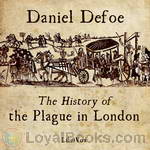 The History of the Plague in London
The History of the Plague in London
The History of the Plague in London is a historical novel offering an account of the dismal events caused by the Great Plague, which mercilessly struck the city of London in 1665. First published in 1722, the novel illustrates the social disorder triggered by the outbreak, while focusing on human suffering and the mere devastation occupying London at the time. Defoe opens his book with the introduction of his fictional character H.F., a middle-class man who decides to wait out the destruction of the plague instead of fleeing to safety, and is presented only by his initials throughout the novel... | |
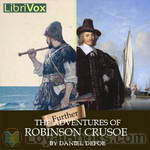 The Further Adventures of Robinson Crusoe
The Further Adventures of Robinson Crusoe
“THE FARTHER ADVENTURES OF ROBINSON CRUSOE; Being the Second and Last Part OF HIS LIFE, And of the Strange Surprizing Accounts of his Travels Round three Parts of the Globe.” After the death of his wife, Robinson Crusoe is overcome by the old wanderlust, and sets out with his faithful companion Friday to see his island once again. Thus begins a journey which will last ten years and nine months, in which Crusoe travels over the world, along the way facing dangers and discoveries in Madagascar, China, and Siberia. | |
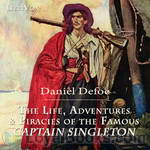 The Life, Adventures & Piracies of Captain Singleton
The Life, Adventures & Piracies of Captain Singleton
The Life, Adventures & Piracies of the Famous Captain Singleton is a "bipartite adventure story whose first half covers a traversal of Africa, and whose second half taps into the contemporary fascination with piracy. It has been commended for its depiction of the homosexual relationship between the eponymous hero and his religious mentor, the Quaker, William Walters.". | |
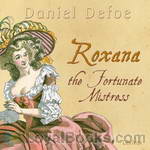 Roxana: The Fortunate Mistress
Roxana: The Fortunate Mistress
The full title of the novel is Roxana: The Fortunate Mistress Or, a History of the Life and Vast Variety of Fortunes of Mademoiselle de Beleau, Afterwards Called the Countess de Wintselsheim. The novel concerns the story of an unnamed "fallen woman", the second time Defoe created such a character (the first was a similar female character in Moll Flanders). In Roxana, a woman who takes on various pseudonyms, including "Roxana," describes her fall from wealth thanks to abandonment by a "fool" of a husband and movement into prostitution upon his abandonment. Roxana moves up and down through the social spectrum several times. | |
By: Daniel G. Brinton (1837-1899) | |
|---|---|
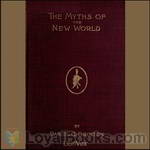 The Myths of the New World
The Myths of the New World
The Myths of the New World's full title describes it as.. " a treatise on the Symbolism and Mythology of the Red Race of America", an attempt to analyse and correlate scientifically, the mythology of the American Indians. Note: Brinton advocated theories of scientific racism that were pervasive at that time. | |
By: Dante Alighieri (1265-1321) | |
|---|---|
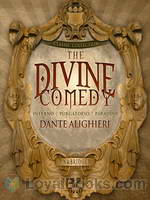 The Divine Comedy
The Divine Comedy
The Divine Comedy (Italian: Commedia, later christened “Divina” by Giovanni Boccaccio), written by Dante Alighieri between 1308 and his death in 1321, is widely considered the central epic poem of Italian literature, the last great work of literature of the Middle Ages and the first great work of the Renaissance. A culmination of the medieval world-view of the afterlife, it establishes the Tuscan dialect in which it is written as the Italian standard, and is seen as one of the greatest works of world literature... | |
By: Dashiell Hammett (1894-1961) | |
|---|---|
 Five Continental Op Stories
Five Continental Op Stories
Before Sam Spade chased the black bird in The Maltese Falcon and Nick and Nora Charles stirred their first martinis in The Thin Man, the Continental Op walked early twentieth century San Francisco’s mean streets for the Continental Detective Agency. Dashiell Hammett used his own experiences as a Pinkerton operative to lend realistic detail to this creation. These first five stories were published in Black Mask magazine in 1923. - Summary by Winston Tharp | |
 Gutting of Couffignal
Gutting of Couffignal
Dashiell Hammett’s hardboiled detective is assigned by his agency to guard a stash of wedding presents on an exclusive Bay Area island. Just as he settles in for what he thinks will be a boring break from the pursuit of bad guys, the lights go out and the sounds of gunfire and explosions shatter the quiet of the night. A military style assault on the island ‘s rich residents is underway, and only the Continental Op can stop it! - Summary by Winston Tharp | |
 Tenth Clew and Other Continental Op Stories
Tenth Clew and Other Continental Op Stories
Biographer Nathan Ward has called “The Tenth Clew” Dashiell Hammett’s “first real jewel of a story.” In it, Hammett’s nameless Continental Detective Agency operative survives being knocked unconscious and dumped in San Francisco Bay. This kind of action was what his Black Mask magazine editors and readers were asking for, and Hammett somewhat grudgingly obliged them with continuing stories of the Continental Op. | |
By: David Garnett (1892-1981) | |
|---|---|
 Lady into Fox
Lady into Fox
When Sylvia Tebrick, the 24-year-old wife of Richard Tebrick, suddenly turns into a fox while they are out walking in the woods, Mr. Tebrick sends away all the servants in an attempt to keep Sylvia's new nature a secret. Both then struggle to come to terms with the problems the change brings about. | |
By: David Hilbert (1862-1943) | |
|---|---|
 Mathematical Problems
Mathematical Problems
Lecture delivered before the International Congress of Mathematicians at Paris in 1900 and subsequently published in the Bulletin of the American Mathematical Society Vol. 8 (1902), 479-481. | |
By: David Lindsay (1876-1945) | |
|---|---|
 A Voyage to Arcturus
A Voyage to Arcturus
A Voyage to Arcturus is a novel by Scottish writer David Lindsay, first published in 1920. It combines fantasy, philosophy, and science fiction in an exploration of the nature of good and evil and their relationship with existence. It has been described by critic and philosopher Colin Wilson as the "greatest novel of the twentieth century" and was a central influence on C. S. Lewis's Space Trilogy. | |
By: David Whitelaw | |
|---|---|
 The Princess Galva
The Princess Galva
Edward Povey had been a correspondence clerk for twenty-two years when he was summarily dismissed. So how did he find himself mixed up with an orphan girl, who was really a princess, as she sought to reclaim her throne from the man who had killed her parents? Well, however it had happened, it was romantic. And after two decades in the basement office of a shipping company, he was ready for a bit of romance. (Introduction by MaryAnn) | |
By: Deborah Alcock (1835-1913) | |
|---|---|
 Spanish Brothers
Spanish Brothers
The daughter of a minister, Deborah Alcock wrote novels on a Christian theme. The Spanish Brothers is set in the sixteenth century and deals with Protestant martyrdom during the Spanish Inquisition. Follow the fortunes of brothers Juan and Carlos as they face the trials and pressures of remaining true to their faith despite hardship, imprisonment, torture and even the agonizing deaths of those dear to them. | |
By: Denis Diderot (1713-1784) | |
|---|---|
 Rameau's Nephew
Rameau's Nephew
Rameau's Nephew, or the Second Satire (French: Le Neveu de Rameau ou La Satire seconde) is an imaginary philosophical conversation written by Denis Diderot, probably between 1761 and 1772. It was first published in 1805 in German translation by Goethe, but the French manuscript used has subsequently disappeared. The German version was translated back into French by de Saur and Saint-Genies and published in 1821. The first published version based on French manuscript appeared in 1823 in the Brière edition of Diderot's works... | |
By: Dinah Craik (1826-1887) | |
|---|---|
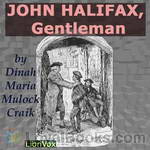 John Halifax, Gentleman
John Halifax, Gentleman
This novel, published in 1856, was one of the popular and beloved novels in the Victorian era. It is told in the first person by Phineas Fletcher, an invalid son of a Quaker tanner who is presented to us in the beginning as a lonely youth. John Halifax, the first friend he ever had, is a poor orphan who is taken in by his father to help in the work which his sickly son can't constantly do. Phineas tells us in an unforgettable way how John succeeded in rising from his humble beginning and become a wealthy and successful man. But with the money come horrible troubles... In an unforgettable manner, we learn to know all the characters of the novel as if they really lived. | |
By: Dinah Maria Craik (1826-1887) | |
|---|---|
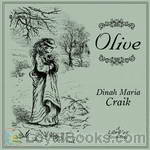 Olive
Olive
Inspired by Jane Eyre, Dinah Maria Craik's 1850 novel, Olive, was one of the first to feature a disabled central character. 'Slightly deformed' from birth, Olive believes that she will never be able to marry like other women, so she devotes her life to her art, her mother, and above all, her religion. It takes a dark secret from the past and a new, fascinating acquaintance, to make her realize what her life could be. | |
By: Dinah Maria Mulock Craik (1826-1887) | |
|---|---|
 Fairy Book
Fairy Book
The sleeping beauty in the wood -- Hop-O'-My-Thumb -- Cinderella; or, the little glass slipper -- Adventures of John Dietrich -- Beauty and the Beast -- Little One Eye, Little Two Eyes, and Little Three Eyes -- Jack the giant-killer -- Tom Thumb -- Rumpelstilzchen -- Fortunatus -- The Bremen Town Musicians -- Riquet with the tuft -- House Island -- Snow-White and Rose-Red -- Jack and the bean-stalk -- Graciosa and Percinet -- The iron stove -- The invisible prince -- The woodcutter's daughter --... | |
By: Dolf Wyllarde | |
|---|---|
 The Pathway of the Pioneer
The Pathway of the Pioneer
The story of seven girls who have banded themselves together for mutual help and cheer under the name of “Nous Autres.” They represent, collectively, the professions open to women of no deliberate training, though well educated. They are introduced to the reader at one of their weekly gatherings and then the author proceeds to depict the home and business life of each one individually. (From the 1909 back-of-book advertisement) | |
By: Dom Bede Camm (1864-1942) | |
|---|---|
 Voyage of the Pax
Voyage of the Pax
An amazing allegorical story about the journey to Heaven, using the image of a journey across the water in a ship named The Pax. St. Benedict's Rule helps to keep the travelers faithful to their goal. They encounter storms, monsters, and enticing islands along the way... if you were in the ship, would you stay the course through all the temptations? | |
By: Donald Alexander Mackenzie (1873-1936) | |
|---|---|
 Elves and Heroes
Elves and Heroes
This volume describes, in verse, the mythical creatures and people of ancient Scotland. It also includes explanatory notes about about the characters and folk tales that inspired the author's poetry. (Introduction by Matthew Reece) | |
By: Donald McGibney | |
|---|---|
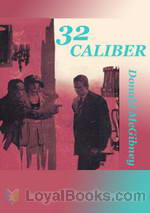 32 Caliber
32 Caliber
The recent interest that's being generated in the pulp fiction writers of the 1920s has lead to many of the books of that genre being resurrected and read once again. For modern-day readers, these represent what are now called “airport-lounge reads” and ideal for those few hours that you have to kill waiting in an airport or railway station, while traveling or on holiday, when you don't want anything too heavy to weigh you down! Pulp fiction, so called because the books were generally printed on cheaper paper made from recycled wood pulp, had certain characteristics... | |
By: Donald Wollheim (1914-1990) | |
|---|---|
 The Secret Of The Ninth Planet
The Secret Of The Ninth Planet
An alien race has put a station on Earth and other planets in order to steal the rays of the sun, possible causing the sun to nova within two years. Burl Denning, a high school student, is the only person who has the power to stop the alien project. Can he and the crew of the experimental space ship Magellan act in time to save the earth? | |
By: Dorothy C. Paine | |
|---|---|
 A Little Florida Lady
A Little Florida Lady
This is the story of a little girl from New York who moves with her family to Florida in the late 19th Century. Parental warning: as this book was first published in 1903 and set in the American South, and although the author tries to be open-minded, please be aware that there are slang words used for African Americans. | |
By: Dorothy Canfield Fisher (1879-1958) | |
|---|---|
 The Bent Twig
The Bent Twig
Semi-autobiographical series of incidents in the life of an intellectual American family in the late 19th - early 20th Century as seen by favored daughter, Sylvia Marshall. Her father is an economics professor in a Midwestern state university and she is following in his inquisitive footsteps. Canfield writes this in a matter-of-fact manner with Tarkingtonesque good humor. | |
By: Dorothy L. Sayers (1893-1957) | |
|---|---|
 Whose Body?
Whose Body?
The first novel in her renowned series of detective fiction, Sayers introduces Lord Peter Wimsey, a bon vivant gentleman, whose hobby of playing detective is put to the test, as he is launched into his first official crime investigation. The mystery begins when the body of an unidentified man has been found in the bathtub of local architect Mr. Thipps. Adding to the peculiarity of the situation is the fact that the corpse is stark naked except for a pair of expensive pince-nez glasses. Due to the incriminating circumstances of the murder, the official investigator suspects Thipps to be the perpetrator of the bizarre murder... | |
By: Dorothy Richardson (1873-1957) | |
|---|---|
 Pointed Roofs
Pointed Roofs
Miriam Henderson is one of what novelist Dolf Wyllarde (in her great work, The Pathway of the Pioneer) termed "nous autres," i.e., young gentlewomen who must venture forth and earn their living after their fathers have been financially ruined. Also, she has read Villette; she thus applies for and is offered a job teaching conversational English at a girls' school, albeit in Germany rather than France. Pointed Roofs describes her year abroad, as she endeavors to make her way in the hotbed of seething female personalities that populate the school, overseen by her employer, the formidable Fraulein... | |
 Backwater (Pilgrimage, Vol. 2)
Backwater (Pilgrimage, Vol. 2)
"Backwater" is the second volume of "Pilgrimage," a series of thirteen autobiographical novels by Dorothy Richardson considered to have pioneered the "stream of consciousness" technique of writing. In a review of the first volume in the series, "Pointed Roofs" (The Egoist April 1918), May Sinclair first applied the term "stream of consciousness" in her discussion of Richardson's stylistic innovations. Richardson, however, preferred the term "interior monologue." Miriam Henderson, the central character in Pilgrimage, is based on the author's own life between 1891 and 1915... | |
By: Dorothy Wayne (0-0) | |
|---|---|
 Dorothy Dixon and the Mystery Plane
Dorothy Dixon and the Mystery Plane
Young peoples book of adventure in aviation with young women in the lead rolls. This is in the earlier days of aviation. | |
By: Douglas Fairbanks (1883-1939) | |
|---|---|
 Laugh and Live
Laugh and Live
Douglas Fairbanks, Sr. (May 23, 1883 – December 12, 1939) was an American actor, screenwriter, director and producer. He was best known for his swashbuckling roles in silent films such as The Thief of Baghdad, Robin Hood, and The Mark of Zorro. His book, Laugh and Live, is a book about positive virtues and advice for leading a good, healthy, and successful life. An advisory about this book is in order. Published in 1917, it was written at a time when “men went to work, women kept house, and supported their man”... | |
By: Douglas Grant (aka Isabel Ostrander) (1883-1924) | |
|---|---|
 Anything once
Anything once
An unlikely pair of wanderers they were; the orphan girl Lou and her travelling partner Jim Botts. Jim appeared in need of following some apparent 'rules' during the journey, while Lou seemed in need of better clothing, and perhaps some refinement. But who was most benefitting whom on the week-long journey from rural village to big city? And which of the two was willing to try anything once? (Introduction by Roger Melin) | |
By: Douglas William Jerrold (1803-1857) | |
|---|---|
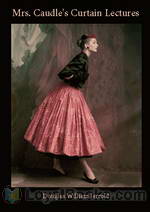 Mrs. Caudle's Curtain Lectures
Mrs. Caudle's Curtain Lectures
First serialized in Punch magazine in 1845, and officially published in book form in 1846, Mrs. Caudle's Curtain Lectures presents a collection of 37 lectures delivered by Mrs. Caudle to her husband as a means of reproach for his trivial infractions. Also, the author marvelously incorporates typical elements responsible for disagreements between spouses including the antipathetic mother-in-law, the ne’er-do-well friends, and the jealous outbursts. Jerrold’s charming piece of satire introduces the Victorian married couple, Mr... | |